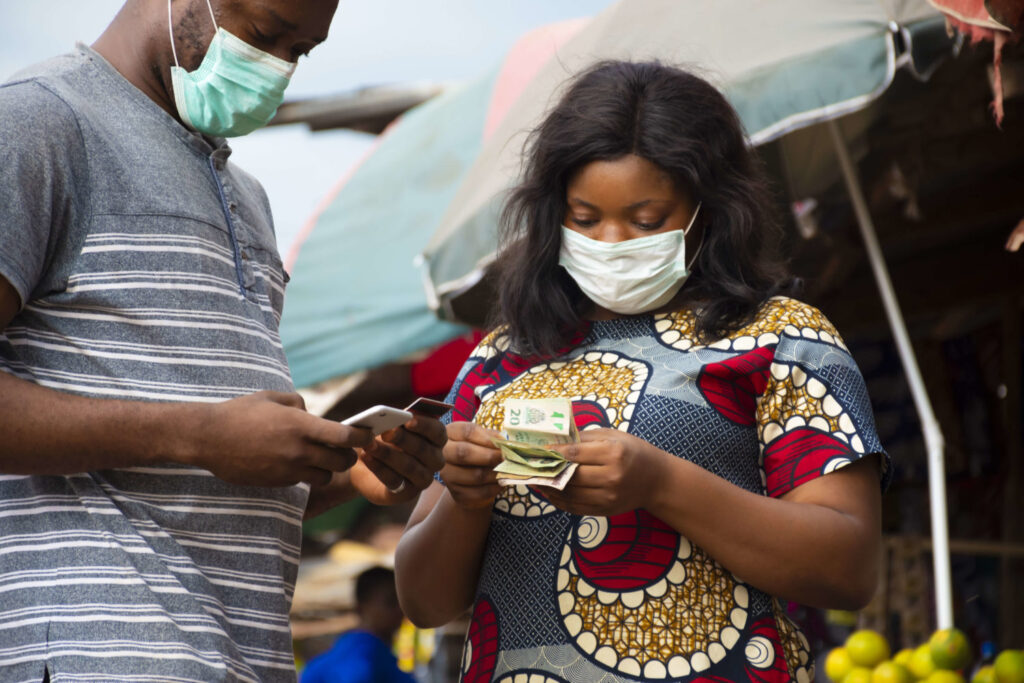
CDC Group, the UK’s development finance institution, is one of the largest DFIs in the world. With nearly $6 billion invested in companies located mostly in Africa and South Asia, CDC is an impact investor that aims to drive development through commercial means.
CDC invests across a wide range of sectors but focuses on seven priority sectors that it has identified as having the greatest potential for development impact. Among these, the financial services sector currently represents a greater share of CDC’s portfolio than any other sector.
As part of its exploration into how DFIs are responding to COVID-19, in particular with respect to the role of the financial sector, CFI connected with Machal Karim, an executive on CDC’s Development Impact team who focuses on financial services in developing countries.
For its COVID-19 response, CDC has laid out three areas of focus: ‘Preserve,’ ‘Strengthen’ and ‘Rebuild.’ Can you tell us more about those?
We prepared a briefing document with complete details that is available on our COVID-19 response page.
Our immediate priority has been to preserve the viability of our current portfolio of over 1,200 businesses that employ more than 800,000 people combined.
Our immediate priority has been to preserve the viability of our current portfolio of over 1,200 businesses that employ more than 800,000 people combined. This is particularly the case in those sectors most affected by COVID-19, where it’s been crucial to act to protect the positive environmental, economic, and social impact of these businesses. Our support has included providing working capital, technical assistance, and guidance to improve their resilience and protect jobs.
Our second area of focus is to strengthen the resilience of businesses by scaling up our response to the economic and health challenges of the crisis. On the economic side, we’re channeling much-needed liquidity to local banks to enable them to support their business customers. And to support those that have a direct role in combating the COVID-19 pandemic, we are assessing opportunities to invest in businesses providing healthcare or access to basic goods and services.
We’re now at a point where, alongside these more immediate actions, we’re thinking more about our third area of focus – to support economies to rebuild and recover once the worst effects of the pandemic have passed. As a DFI, our role to address the long-term challenges a crisis will bring – continuing to invest patient capital at a time when commercial investors pull back – is vital.
In terms of ‘Strengthen,’ CDC is looking to provide liquidity for local financial service providers. Have you identified opportunities for this type of support yet?
We’re giving priority to those who are in most urgent need of liquidity support. Over the last few months, we’ve committed just over $400 million to our program of systemic liquidity.
As an example, we’ve recently made an additional $75 million commitment to our existing trade finance facility with Absa Bank, an African financial services group. The pandemic has put significant pressure on African banks as international banks continue to withdraw from the continent.
What makes this facility particularly innovative is that it is aimed at boosting trade finance funding to some of Africa’s most vulnerable countries.
The investment will enable local banks to sustain the availability of trade finance, supporting supply chains during the crisis. And what makes this facility particularly innovative is that it is aimed at boosting trade finance funding to some of Africa’s most vulnerable countries and in sectors that are critical to serving people’s basic needs during the crisis – food and agriculture and health.
What about timeframes? What do you see as the medium-term needs beyond liquidity?
What we do know is that the crisis is shifting from an acute challenge to a chronic one, and this means that our role will be as a partner for the long-term.
CDC has identified various short-term to longer-term risks and provided corresponding suggestions, but we’re at a stage where it’s still very difficult to talk about timeframes. We still cannot predict what the ultimate impact will be. What we do know is that the crisis is shifting from an acute challenge to a chronic one, and this means that our role will be as a partner for the long-term, supporting businesses through the course of the pandemic and to rebuild sustainably.
In terms of needs beyond liquidity, our approach throughout has been to provide guidance for employers, investors, and financial institutions on issues ranging from job protection, to customer protection, to remote working. As time has moved on, the nature of this guidance has evolved to include advice on returning to the workplace and how to support women working from home with limited access to technology.
Another part of our approach has been to provide support to investee businesses through our technical assistance facility, CDC Plus. This has included one facility providing grants to businesses, so they can adapt or scale-up to form part of the response to the pandemic, and a second facility to support the development of guidance for companies on how to respond to the crisis.
Throughout the short and medium terms, CDC suggests businesses maximize their “digital footprint and channels” as much as possible. How are your investees working to accelerate digitization for consumers?
We’ve been supporting our investee businesses, including financial institutions, to proactively explore how they may want to pivot their current products or operations to better meet customer needs. Much of this has revolved around learning more about digital opportunities and maximizing their digital offerings so they can continue to operate under the changing environments and new types of customer interaction and behavior that the pandemic has brought about.
We continue to support our investees through various channels, including our technical assistance facility, to explore these opportunities and step up their activities as economies open up.
Consumer protection remains an important topic for CDC. How have consumer protection challenges shifted in the COVID era?
Consumer protection risks have become particularly heightened due to the pandemic.
We recognized that financial institutions and their customers would come under particular stress as a result of COVID-19. Consumer protection risks have become particularly heightened due to the pandemic, as financial institutions have had to balance the immediate stress on liquidity with the need to sustain support to their customers and abide by regulatory requirements.
Early on, we ensured that the financial institutions we’re invested in had the support they needed to make decisions and manage risks while protecting customers, such as by issuing this guidance document. Mindful of the many stresses on employment, liquidity and cashflows, we urged our financial institution partners to continue to consider the needs of, and risks to, customers through the crisis.
How has this crisis shifted the perception of inclusive finance, if at all?
Now more than ever, support to financial systems is critical for economic recovery, particularly for the most vulnerable.
Now more than ever, support to financial systems is critical for economic recovery, particularly for the most vulnerable. Our work to provide systemic liquidity has been a concrete channel of support to the market, with an explicit focus on supporting the most vulnerable first and ensuring their liquidity needs are managed.
When we start to recover, it will be vital to remember all segments of the market to ensure that the most vulnerable and excluded groups are not left behind. It will also be important to continue to support financial institutions in reaching those customers that have historically been perceived as higher risk and harder to reach, as they are also the most vulnerable.
CDC’s head of Africa has argued that the banking sector is where DFI support is most crucial, but that private capital will be required in the longer term. Does CDC structure any direct support to MSMEs or does everything flow via the banking sector?
We know that our most effective way for getting capital to SMEs is through partners, rather than investing directly.
A key part of our Financial Institutions’ Strategy is to help intermediaries serve SMEs because SMEs are the growth engines of the economy in our geographies. We know that our most effective way of getting capital to this size of business is through partners, rather than investing directly.
This includes investing in non-bank financial companies so that alternatives to traditional bank financing become available to SMEs, as well as supporting microfinance institutions looking to extend their lending to SMEs. It also includes working with our bank investees to increase the finance they provide to SMEs. This can mean funding work to develop products and operations better suited to SME clients. And it can mean entering into risk-sharing agreements, which reduce banks’ capital cost of lending to SMEs, or trade finance agreements to bridge the ‘trade finance gap’ and support trade undertaken by local businesses. Finally, it includes investing through funds to reach SMEs with different types of capital.
That’s why an important part of our response has been focused on working with our investee financial institutions, so that we can quickly help them to increase the credit available in our markets. For example, by expanding our pre-existing trade finance programs, we can inject liquidity quickly and accurately, and ensure that domestic supply chains keep operating, which in turn supports SMEs within those markets.
Has CDC coordinated with other DFIs on its COVID-19 response? What’s been the nature of this inter-DFI coordination, and what more can be done?
DFIs came together very early on to find ways to collaborate in response to the pandemic. The DFI Alliance, involving organizations from 16 OECD countries, has been working together to bring liquidity to the market, support companies impacted by the virus, and promote new investment.
CDC has been working with both bilateral and multilateral DFIs. There are various working groups underway coordinating on areas ranging from technical assistance funding, to our approach to certain sectors, to supporting the liquidity of investment funds.
We’ve also been collaborating on how to support the rebuilding of businesses and economies in a way that is more inclusive. For example, alongside our peers, we called for a gender-sensitive approach among investors in both immediate responses and longer-term recovery solutions.
We will continue to stand firm to play our role at a time when commercial investors are pulling back.
We feel proud of what we’ve been able to achieve so far and recognize there is a lot more to do as the pandemic shifts from an acute to a chronic challenge. Our approach of providing much-needed liquidity through financial intermediaries is very likely to continue to be needed in the coming years. We will continue to stand firm to play our role at a time when commercial investors are pulling back, so that in the long-term, businesses and economies are able to successfully rebuild.









